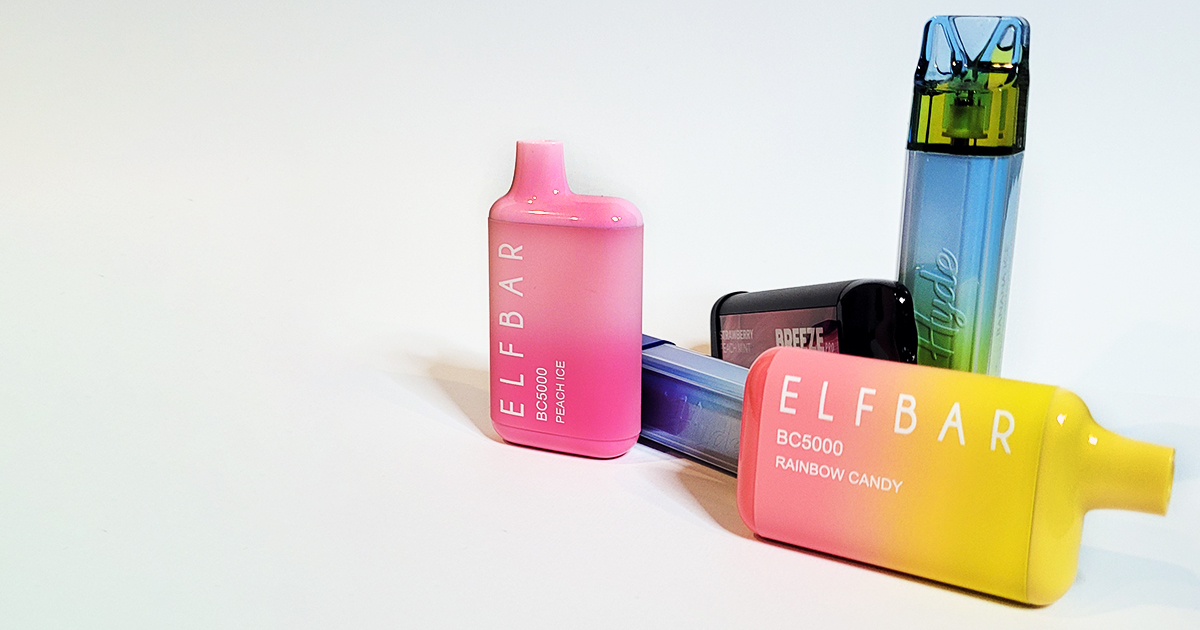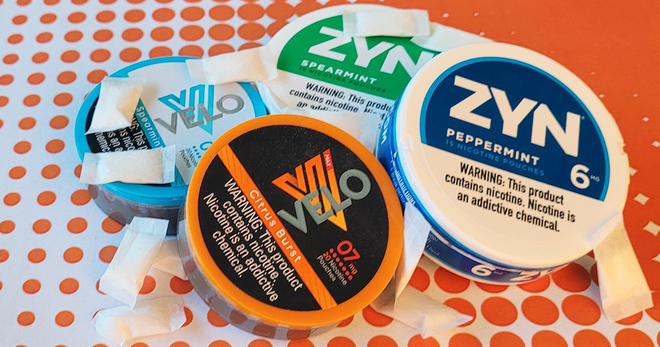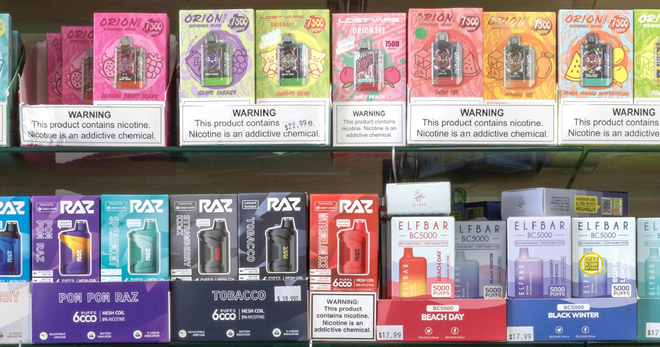High-nicotine e-cigarettes dominate the market, with sales increasing 15-fold in five years
Sales of e-cigarettes with the highest levels of nicotine (5% or greater nicotine strength) have grown drastically in the past five years, increasing from 5% of total e-cigarette sales in 2017 to 81% in 2022, a nearly 15-fold increase.
For disposable e-cigarettes, which are the most popular type of e-cigarette with youth and come in many flavors, the increase is even steeper. More than 90% of disposable e-cigarettes sold contained the highest levels of nicotine, compared to 0% in 2017. Disposable e-cigarettes have skyrocketed in popularity following the product’s exemption from federal restrictions on flavored e-cigarettes in 2020, with use increasing about 1,000% among high school e-cigarette users between 2019 and 2020.
The research, published in Nicotine and Tobacco Research by the Centers for Disease Control in partnership with Truth Initiative®, also finds that the price of e-cigarettes with high nicotine levels has either decreased or has not changed, while those with lower nicotine levels are more expensive. Findings suggest that limiting nicotine strength of e-cigarettes could be part of a comprehensive tobacco control strategy to reduce youth addiction to these products.
81%
U.S. Sales of e-cigarettes with greater than 5% nicotine increased to 81% in 2022
90%
More than 90% of disposable e-cigarettes sold contained the highest levels of nicotine
46%
Nearly half (46%) of high schoolers who vape do so near daily
Rapidly rising nicotine levels in e-cigarettes risk addicting young people
In 2022, over 2.5 million middle and high school students reported using e-cigarettes, according to the National Youth Tobacco Survey, with nearly half (46%) of high schoolers who vape doing so near daily, putting them on a trajectory for a potential lifetime of nicotine addiction.
As e-cigarettes have expanded to include a diverse array of flavors and device types, nicotine strengths have been climbing. The average nicotine concentration in e-cigarette products increased from 2.10% to 4.34% between 2013 and 2018 alone, a 106.7% increase. The popular JUUL devices were originally introduced in 2015 with a 5% nicotine salt pod, prompting JUUL competitors to begin offering nicotine salt concentrations as high as 7% in what has been called a “nicotine arms race.”

High nicotine products make up bulk of e-cigarette market
To gauge change in nicotine levels, researchers examined e-cigarette retail sales data from January 2017-March 2022 in brick-and-mortar retailers across the continental U.S. Sales of e-cigarettes with greater than 5% nicotine have grown drastically in the past five years, increasing from 5% in 2017 to 81% in 2022. The unit share sales of high nicotine products increased by nearly 15 times and dollar share sales increased by over 13 times between 2017 and 2022.
Products with the highest levels of nicotine made up the majority of e-cigarette sales regardless of device type and flavor. For example, most e-cigarettes sold in “other” (96%), mint (87%), menthol (79%), and tobacco (61%) flavors came in 5% or greater nicotine strength. Between 2017 and 2022, sales of disposable e-cigarettes with over 5% nicotine rose from 0% to over 90% of the market share, while pre-filled cartridges went from 8% to 74%. On the other hand, products with less than 1% nicotine strength, including zero-nicotine products, accounted for less than 0.1% of sales.
Higher nicotine e-cigarettes plummet in prices
The increase in market share and sales of high nicotine e-cigarettes corresponded with falling prices. By 2022, products with higher nicotine levels became much cheaper or stayed the same while those containing lower nicotine concentrations became more expensive. Prices for products with nicotine strengths from 1-2% increased from $10.40 to $29.20, while those in the 4-5% range dropped in price from $20 to only $12.80 during the time period between 2017 and 2022. Because young people are more sensitive to prices, lower prices for high-nicotine e-cigarettes can lead to greater uptake and use of the products.
A national standard for nicotine levels
There are no limits on nicotine concentrations in e-cigarettes in the U.S. In June 2022, the Biden administration included a plan on its agenda to reduce nicotine in cigarettes to non-addictive levels. Truth Initiative strongly believes that the reduction of nicotine to non-addictive levels must extend to all tobacco products, including e-cigarettes. “A nicotine standard could reduce the addictiveness of these products, particularly to populations like youth,” the study authors write. “Strategies to address factors that make [e-cigarettes] particularly appealing to youth, including flavors and product innovations, are critical.”
More in emerging tobacco products
Want support quitting? Join EX Program
By clicking JOIN, you agree to the Terms, Text Message Terms and Privacy Policy.
Msg&Data rates may apply; msgs are automated.


